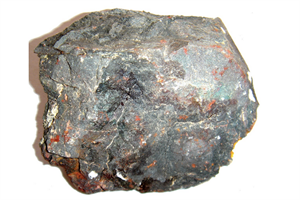
PUMPA - SMART LEARNING
எங்கள் ஆசிரியர்களுடன் 1-ஆன்-1 ஆலோசனை நேரத்தைப் பெறுங்கள். டாப்பர் ஆவதற்கு நாங்கள் பயிற்சி அளிப்போம்
Book Free DemoMagnets are naturally occurring substances with the property of attracting iron. They are classified into two types, namely, natural magnets and artificial magnets.
Natural Magnets:
Naturally occurring rocks with the property of attracting iron are called natural magnets. They are permanent magnets in nature which means their magnetic strength can never be lost. They are found in sand deposits all over the world.

A natural magnet
Natural magnets include Pyrrhotite, also known as Iron Sulphide, Ferrite, and Coulumbite. The strongest natural magnets are lodestones called Magnetite. They are made up of an iron ore called Iron oxide.
Ores of iron:
Iron ores are generally classified into three types. They are:
Iron ore | Chemical formula | % of iron |
Hematite | Fe_2O_3 | 69\% |
Magnetite | Fe_3O_4 | 72.4\% |
Siderite | FeCO_3 | 48.2\% |
Magnetite is an oxide ore of iron with the formula Fe_3O_4. Magnetite has the most magnetic properties of all these ores.
Artificial magnets:
Artificial magnets are magnets that are made by humans in a laboratory or factory. These are also known as man-made magnets, and they are more effective than natural magnets. Different kinds of magnets were produced in different shapes and dimensions from a piece of iron.
Example:

Horseshoe magnet, ring magnets, bar magnet, and cylindrical magnet.

Oval-shaped, disc-shaped and cylindrical-shaped magnet.
Even artificial magnets are made by passing electricity through a coil wound on an iron nail.

A simple electromagnet
Metals used for production:
Iron, nickel, cobalt, steel, and other metals are commonly used in artificial magnets. Artificial magnets are also made from alloys of the metals like Neodynium and Samarium.
Comparison of the magnets:
Natural magnets | Artificial magnets |
| Naturally occurring rocks with the property of attracting iron are called natural magnets. | Artificial magnets are magnets that are made by humans in a laboratory or factory. |
| The magnetic strength is difficult to control or change. | Artificial magnets can be produced with necessary and precise strength. |
| They are permanent magnets. | Their properties are temporarily limited and can change from time to time. |
| They have limited use in daily life. | They are commonly used in daily life. |